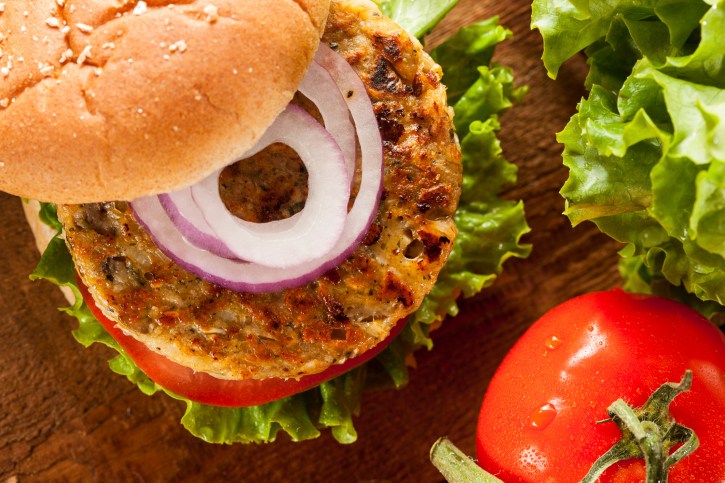The Skinny On High Fructose Corn Syrup
The Skinny on High Fructose Corn Syrup
During the 1980’s, as the sweetener high fructose corn syrup (HFCS) became popular as a food and beverage additive and made its way into mass production and consumption, American’s just happened to grow fatter. In a generation, obesity rates doubled. Today, only a small minority of people are aware that this supposedly “benign” sweetener can be identified in the majority of packaged foods that we consume (some figures purport that it is in 70% of packaged food that’s sold). Many of us are still in the dark about HFCS and don’t realize how it reacts inside the hypothalamus and negatively impacts our ability to regulate our appetite.
Make no mistake: HFCS is entirely manufactured in the laboratory. Technically, it’s hydrolyzed cornstarch—the cornstarch is mixed with enzymes and broken down. It is not anywhere chemically near raw sugar, and there’s no reason to believe that in its being created to be infinitely sweeter than sugar, it’s even remotely good for us.
The unfortunate truth is that we are often misguided by marketing messages that tell us foods are good for us when they contain unhealthy or questionable ingredients. We’ll buy a whole grain loaf of bread thinking we’re choosing well only to discover that the third ingredient is HFCS,or we’ll grab the product that promises “heart healthy” only to find that this, too, contains HFCS. It makes our job as consumers challenging, but we must continue to educate ourselves. Our health depends on it.
Today, researchers are looking at high fructose corn syrup effects more seriously, and in particular studying the interaction of HSFC with the hypothalamus and the hormone leptin, which controls satiety.
A Brief History of HFCS
Pure fructose isn’t nearly the same sugar as high fructose corn syrup. In the early 1970’s, Japanese researchers discovered this method of converting cornstarch into syrup. Even better, it was cheap enough to draw the attention of the soda manufacturers who ditched using liquid sugar for this revolutionary new sweetener. HFCS was found to extend the shelf-life of foods and could be frozen without breaking down.
Today, it’s what makes our morning breads so soft and tasty, and you can find it in everything from yogurt to applesauce to cookies to ketchup. It’s cheaper than liquid sugar and is often deceptively disguised behind those packaged promises and confusing nutrition labels which suggest unlikely serving sizes.
The result: we keep consuming more and more of the stuff while our food manufacturers stay happy—even at the cost of our rising obesity.
1970’s Research and Beyond
In the 1970’s, scientists discovered that both fructose and glycerol lowered the rate of fatty acid oxidation in the liver. They found that the presence of fructose and glycerol in the body alerted enzymes to communicate to cells to store fat particles—rather than use them as energy.
Greg Criser, in his book, Fatland, indicts HFCS as one of a few major players in America’s obesity crisis. He reveals how a 1993 London study showed that long-term fructose consumption triggered VLDL or bad-cholesterol formation, including increased triglycerides, decreased glucose tolerance, and hyperinsulin response in the blood.
Another disturbing study done in 2001 out of Children’s Hospital in Boston targeted 578 children and soda consumption. In the study, 57 percent of children increased their soda intake over the course of a nineteenth- month period, which supports the notion that consuming HFCS tends to make us consume more of the same. Even just one extra soft drink a day increased the risk of obesity by 60%. It didn’t matter what they ate or how much the children exercised. They still gained weight when they consumed HFCS sweetened soft drinks.
The problem is that the body responds to chronic HFCS consumption differently than it might to straight fructose or even raw sugar consumption. The evidence is growing that when we eat HFCS, our bodies respond by looking to consume more of the same—as we continue to store more fat. While the liver releases more and more fat into the bloodstream, over time our metabolism becomes chronically challenged.
HFCS is totally man-made. There’s nothing healthy about this engineered sweetener, and it’s no wonder that our bodies and our appetite regulating hypothalamus could be going haywire when we consume the stuff.
Now That You Know
It’s important to be a detective when it comes to eating for health. Be aware of the hidden culprits that may be contributing to your weight and health challenges. Know that misleading marketing messages are not designed to promote your health, but make you a lifelong consumer of a company’s product. Read the labels on the foods you buy and eat, and if they don’t make sense to you, take the time to learn how to read them.
Your health is worth it.
-
Weight Loss Pomona - Working Your Abs
There has not yet been found to be a person in America today that does
-
What Is the Glycemic Index?
The Glycemic Index (GI) is a way of rating carbohydrate foods acc
-
Comfort Strategies to Replace Emotional Eating
A client just asked: “I know I use food for comfort and to so
-
Hoodia Modern Zeal Of Ancient San
The long marginalized San tribe of South Africa has suddenly come to t
-
4 Days Weight Loss Plan
If you抮e looking for an ultra fast way to lose weight then you should
-
Dropping Weight the Zumba Manner
Shedding pounds does no longer should be the same old routine as a res
- DON'T MISS
- The Definition Of Stress
- Weight Loss Tips To Keep You On Track Part 2
- What To Carry In a Fitness Kit
- College Weight Gain
- Increasing Your Conversion Rates: 50 Tips for Ecommerce Sites
- Top Tips For Joint Pain
- 2-Ingredient All-Natural Stretch Mark Remedy
- Dangerous Weight Loss Methods
- Why Can't I Find Comfort in Sitting?
- The Fat-Burning Power Of Green Tea




